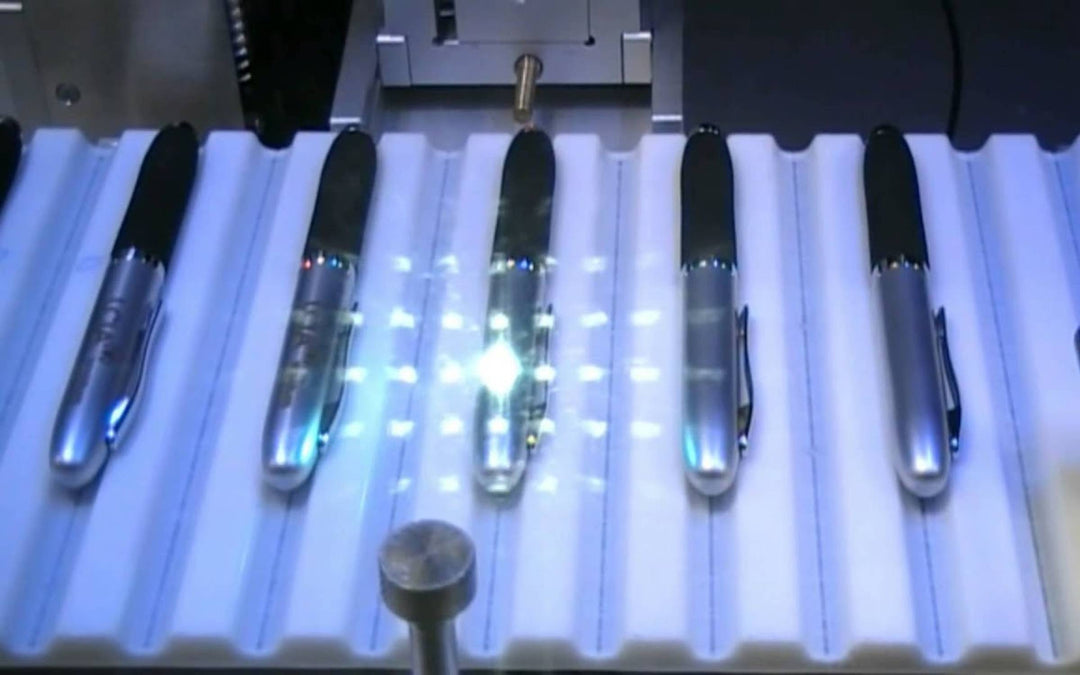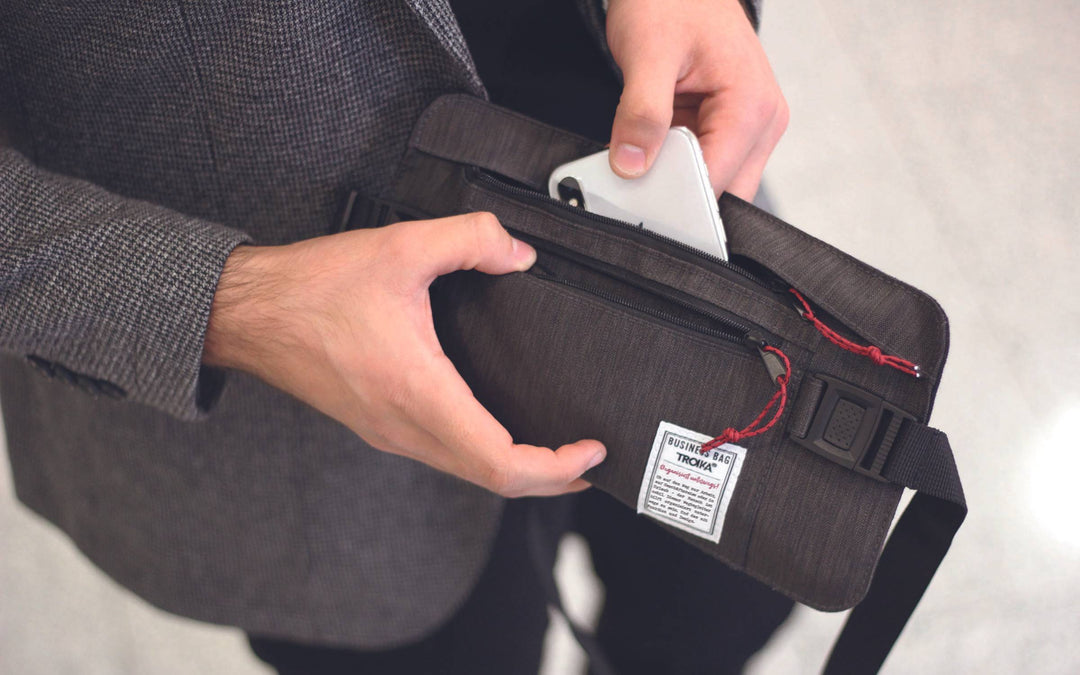Artwork Instructions Custom Notebooks
Keeping it simple
For most of our customers file preparation for a custom notebook is quick and easy and involves your logo, motto or slogan. For more complex print jobs we recommend that you or the person at your organization responsible for graphics and/or brand guidelines study the guide below.
Definition of terms used in this document
1. Color profile - a set of data that characterizes the color in accordance with the standards announced by the International Color Consortium (ICC).
2. CMYK - a set of four basic colors of printing inks commonly used for multi-color printing in printing industry and in related methods. The set of these colors is also referred to as “process colors” or “triad colors”. CMYK is also one of the color models when working with computer graphics.
3. PMS / HKS - abbreviated names of spot color systems.
4. Uniform background - one-color surface.
5. Metamerism - a phenomenon involving a different perception of the color of the same coloring substance (e.g. contained in paint) depending on the type of light in which a given coloring substance is observed.
6. Color proof - a printout from a digital machine that reflects the target printout. The color proof is the basic color pattern during printing.
7. Plano sheet - a printed sheet of paper, uncut and unlaminated, archived to be used as a color reference for reproduction or to assess possible discrepancies between the color pattern and the printout.
File preparation for Printing
File formats:
Files for printing should be delivered in PDF format. The preferred version by is PDF/X-4 (or PDF in version 1.4 and higher, allowing for saving layers). The file should not contain color profiles (ICC). When flattening the transparency, pay attention to whether the graphics have not been mixed with template colors.The file should not contain printing marks (cut lines, registration marks and color stripes). The file should be prepared at 1:1 scale; it should not be scaled.
Color:
Materials should be prepared and delivered using the CMYK color model. In the case of materials prepared with PMS or HKS colors, the exact color number must be specified, taking into account the type of surface (see below).
The Pantone patterns used by our printer are valid from 1.09.2023 to 31.03.2025. The following Pantone templates are valid:
- for coated surfaces: Pantone Formula Guide Solid Coated - colors featured in this guide have the letter C added; ISBN 978-1-590655-56-6
- for uncoated surfaces: Pantone Formula Guide Solid Uncoated - the colors in this guide have the letter U added; ISBN 978-1-590655-57-3
The HKS patterns used by our printer are valid from 1.09.2023 to 31.03.2025. The following HKS templates are valid:
- for uncoated surfaces: HKS K- all colors in this guide have the letter K added;
- for uncoated surfaces: HKS N - all colors in this guide have the letter N added.
Regarding Pantone metallic colors, colors 871-877 can be printed on coated and uncoated surfaces and colors 8003, 8021, 8062, 8100, 8201, 8281, 8321 can be printed only on coated surfaces.
- Neon Pantone colors 801-807 can be printed on coated and uncoated surfaces.
If black color is used by the Contractor in the graphic design, our printer recommends:
- for large graphic elements (uniform backgrounds) use black color in the CMYK graphic model (suggested CMYK composition for deep black is 50/40/35/100);
- for small graphic elements, e.g. texts or lines, use only black (K 100%);
- to prepare gray and black and white photos only with black. In the case of preparing gray from all CMYK components, they will always take shades of triad colors, and in addition, the perception of color will depend on the lighting (metamerism). In the case of gray prepared from all CMYK components, the view on the monitor screen will always be different than the perception of the finished product.
In the case of CMYK digital printing with white, the elements to be printed in this color should be defined as an additional fifth color called “WHITE”.
Color guides:
Unless the customer specifies a different printing color target, we use standard color guides as a color target:
| Colors | Type of Surface | Color Guide |
| CMYK | coated paper | Proof - ISO 12647-7:2016, FOGRA51 |
| CMYK | uncoated paper | Proof - ISO 12647-7:2016, FOGRA52 |
| Pantone® | coated paper | Pantone® Solid Coated |
| Pantone® | uncoated paper | Pantone® Solid Uncoated |
| HKS® | uncoated paper | HKS K guide |
| HKS® | uncoated paper | HKS N guide |
| special spot colors - metallic | coated paper | Pantone® Metallics Solid Coated |
| special spot colors - pastel and fluorescent | coated & uncoated paper | Pantone® Pastels & Neons Solid Coated & Uncoated |
If you are planning to use a color guide other than those listed above, please inform us about it when placing your order and we will accommodate if we can.
Artwork on Re-orders
In the case of re-orders - i.e. orders for a product previously made by our printer with the reference by the customer to the number of the previous order, the color guide is an unfinished printing sheet from the previous production, archived with us. Planos are archived for 18 months. Reissues of projects earlier than 18 months are produced in accordance with the standard guides indicated in the table above.
Before production, it is possible to make a certified proof on customer’s request.
Fonts minimum size and other requirements
All fonts used should be embedded in a file or converted to curves.
We recommend using fonts with a size of not less than 6pt or where the thickness of the element is not less than 0.2pt. The given value applies to printing in black with a raster intensity of 100%. As the intensity of the raster decreases, the minimum thickness should increase.
Thickness increase recommended:
- the minimum element thickness for 100% raster is 0.2pt (0.07mm)
- the minimum element thickness for 75% raster is 0.25pt (0.08mm)
- the minimum element thickness for 50% raster is 0.35pt (0.12mm)
- the minimum element thickness for 25% raster is 0.4pt (0.14mm)
File requirements for de-bossing
- graphic elements must be vector graphics - it is not possible to make a matrix from raster graphics;
- files should be prepared at 1:1 scale;
- elements should be closed objects with a uniform filling i.e. no greys no shading, they cannot contain contours;
- the minimum element thickness is 0.2 mm (= ca 0.6 pt);
- the minimum thickness of the recess (space between two elements) is 0.3 mm (= ca 0.9 pt);
- it is not possible to match the embossing with print elements;
- embossing cannot be placed on UV varnish.
File requirements for de-bossing with foil
- graphic elements must be vector graphics - it is not possible to make a matrix from raster graphics;
- files should be prepared at 1:1 scale;
- elements should be closed objects with a uniform filling, they cannot contain contours;
- the minimum element thickness is 0.2 mm (= ca 0.6 pt);
- the minimum thickness of the recess (space between two elements) is 0.4 mm (= ca 1 pt)
- it is not possible to match the de-bossing with print elements;
- embossing cannot be placed on UV varnish.
UV varnish (Not available for Eco-cover Stitched Journals) :
- the minimum element thickness is 0.4 mm (= ca 1 pt);
- the minimum thickness of the recess (space between two elements) is 0.5 mm (= ca 1.4 pt);
- graphics in files for UV varnish should be larger by 0.1 mm (= ca. 0.2 pt) than the graphics on which this varnish is to be applied;
- material for UV varnish should be delivered in a separate file - it should not be included in files for offset printing.
Digital printing Edge Printing (Not available for Eco-cover Stitched Journals)
- the minimum thicknesses of elements possible to obtain are the same as the minimum thicknesses in offset printing;
- the file for printing should be prepared for each side separately (one PDF file or one PDF page);
- files should always be oriented vertically - according to the indications in the template;
- bleeds in the file should be 0.9 mm on each side;
- do not place details such as logos or text in rounded corners. Such elements should be placed at least 10mm from the rounding;
- graphics of a notebook or a block whose sides are to be printed cannot extend to the bleed;
- in the case of sticky notes, the side cannot be printed over with a solid color. Uniform background can be used on the sides of writing pads.
Screen printing:
- graphic elements must be vector graphics - it is not possible to screen print raster graphics;
- graphics must be prepared in single colors (C, M, Y, K, Pantone or HKS) - it is not possible to mix colors
- colors can only be fully saturated (100%) - there is no possibility of printing separations or tonal transitions; - the minimum element thickness is 0.5 mm (= ca 1.4 pt);
- the minimum thickness of the recess (space between two elements) is 0.5 mm (= ca 1.4 pt)
- the safe distance between two colors is 2 mm
NOTE! Files for screen printing containing a color match (adjacent or overlapping colors) will not always be able to be used - graphics containing such a match must first be verified for the possibility of such printing.
Disclaimers and Exclusions
1. Due to the fact that our printer(s) uses materials with both coated and uncoated surfaces in the production process, special attention should be paid to the type of surface chosen, as it often significantly affects the perception of printed colors. The consequence of this characteristic of the production process described above is the fact that color differences between the color indicated in the guide and its actual reception on the printed material are acceptable. The above does not constitute a defect of the product and does not constitute he basis for a complaint.
2. Particular attention should also be paid to the reception of colors and colors when printing on papers dyed in mass and ecological papers, e.g. Kraft papers, paper made of grass, coffee, apples, etc. Colors printed on these types of paper will always appear differently than when printed on white paper. Any differences in color referred to above, resulting from printing on paper dyed in mass or ecological paper selected by the Contractor, do not constitute a product defect and do not constitute grounds for a complaint.
3. In the case of printing various types of graphic elements using a low-value raster, which the Contractor is obliged to indicate in the graphic material, the edges of such an element shown on the proof printout will always be smooth. However, in reality in offset printing these edges can appear “jagged”. The above does not constitute a defect of the product and does not constitute the basis for a complaint.
4. If it is necessary to convert colors in the sent materials, we are never responsible for differences between the original colors and the colors after printing.
5. The color proof is used only to evaluate the colors and not to evaluate the quality of the print.
6. The colors of the graphics and the colors of the accessories presented in the visualization prepared for the Customer’s approval, are for reference only. The difference between the colors of the visualization and the colors in the finished product does not constitute grounds for a complaint.
7. Due to the characteristics of the product, the uniformity of the colors of bookbinding veneers, satin ribbons, closing elastics, pen holders, self-adhesive papers, and head and tail bands cannot be guaranteed in different production batches.
8. In the case of printing on dyed-in-mass papers, papers with an admixture of organic material and other ecological or recycled papers (such as Kraft papers, grass, coffee, apple and other papers), the maximum ink coverage should not exceed 20% of the surface. In addition, due to the fact that printing on these types of papers is inherently not protected by either foil or varnish, graphics should not be designed either on the bleed or in the bend or crease areas of the cover. Placing graphics in the above-mentioned places may cause ink wiping.
9. For technological reasons, large de-bossing surfaces may have non-uniform discoloration. In-homogeneity of the de-bossing surface is not a basis for complaint.
10. Paper with paper weights from 70g/m2 to 300g/m2 are characterized by partial transparency. Print on the top of the sheet may be partially visible on its other side. Such visibility of the print on the other side of the sheet does not constitute grounds for a complaint.
11. The dimensions of the products indicated by us in the final order confirmation may slightly differ from the final dimensions of the product. For technological reasons, the actual size of the finished product may vary from the original dimensions specified by (by +/- 2 mm).
12. The number of sheets in notebooks and pads indicated by in our commercial offer and in the order confirmation may slightly differ from the final number of sheets in the product. For technological reasons, the actual number of sheets in notebooks and pads may vary from the original amount specified (by +/- 4%).
13. For technological reasons, the actual location of the product elements may vary in relation to the visualization approved by the customer.


